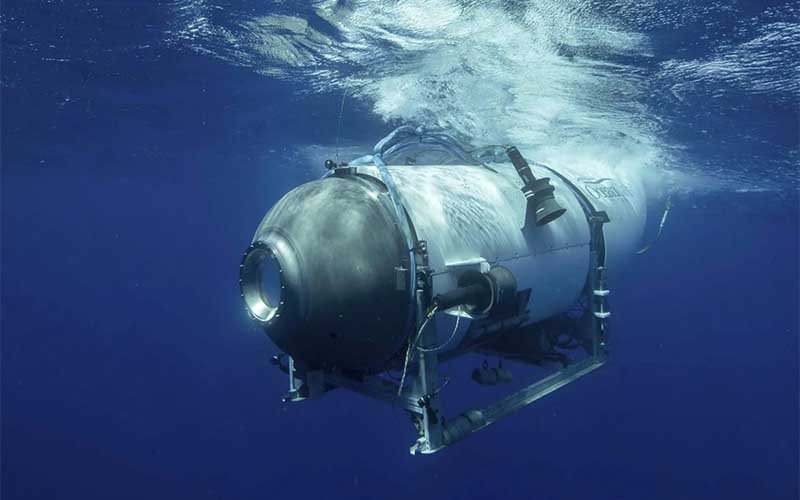- Titan hull failed from poor design, no certification
- OceanGate stored vessel outdoors in harsh winter
- CEO ignored engineers, falsified safety records
- Financial pressure led to reckless cost-cutting
- Report urges strict new submersible regulations
The 2023 implosion of OceanGate’s Titan submersible, which killed five people during a Titanic dive, was the result of engineering failures, financial pressures, and a toxic corporate culture, according to a damning 320-page report released by the US Coast Guard’s Marine Board of Investigation.
The vessel imploded on June 18, 2023, during its descent to the Titanic wreck site, roughly 12,500 feet under the North Atlantic. Investigators concluded that the carbon fiber hull failed under immense pressure due to flaws in design, repeated damage, and prolonged neglect.
The Titan submersible had a documented history of malfunctions dating back to 2021. In one critical incident in July 2022, the vessel became stuck in the Titanic wreckage and suffered irreversible hull damage—yet no full investigation followed.
The report confirms Titan’s carbon fiber hull was never certified by any recognized authority. OceanGate bypassed conventional safety standards, using unproven materials and self-certification to avoid regulatory scrutiny. Internal concerns were ignored. Warning signs were missed.
Unsafe Storage Under Extreme Conditions
Perhaps most disturbing: investigators revealed the Titan was stored outdoors in a Canadian parking lot for nearly seven months during winter 2022–2023. The sub endured freezing rain, snow, and temperatures as low as 1.4°F without protective covering.
OceanGate had been offered a fitted weatherproof wrap for $1,270. The company never replied. Investigators believe repeated freeze-thaw cycles may have weakened the hull further. The vessel was eventually moved indoors in February 2023—four months before the fatal dive.
Autocratic CEO, Silenced Experts, Suppressed Data
At the center of the report is OceanGate CEO Stockton Rush, who perished in the implosion. According to multiple employee testimonies, Rush dismissed safety warnings, exaggerated safety metrics, and retaliated against dissenters.
Former engineers described a workplace where protocols were bypassed, concerns mocked, and critical voices fired. The result was an authoritarian culture where risk was minimized, and employees were discouraged from speaking out. The Coast Guard found glaring gaps between OceanGate’s written safety policies and its actual practices.
Had Rush survived, the report suggests he could have faced criminal charges for negligence.
By early 2023, OceanGate was under mounting financial stress. Employees were asked to forgo salaries. Experienced engineers left. The company began relying on underqualified contractors. Safety systems were downgraded, including the switch from voice to text-only communications.
One vital leadership role—the director of engineering—remained vacant for months. The absence of technical oversight contributed directly to the mission’s catastrophic failure.
Legal Fallout and Industry Reckoning
The families of those lost, including French Titanic expert Paul-Henri Nargeolet and British adventurer Hamish Harding, are pursuing lawsuits. One claim seeks over $50 million in damages, citing OceanGate’s failure to disclose the sub’s risks.
The Coast Guard’s report calls for sweeping reforms:
- Mandated communication standards for all submersibles
- Uniform safety certifications for US-based deep-sea craft
- Stronger federal oversight of experimental vessels
“These deaths were preventable,” said Board Chair Jason Neubauer. “Innovation must not come at the expense of human life.”
A Tragic Legacy
OceanGate has since shut down operations. In a statement, the Dawood family—who lost Shahzada Dawood and his 19-year-old son, Suleman—said the tragedy must spark change:
“No report can fill the void left in our lives. But if Shahzada and Suleman’s legacy leads to reform, it will bring us some peace.”
Investigators and victims’ families now hope that the Titan implosion becomes a watershed moment—one that shifts the submersible industry away from unregulated risk and toward strict, life-saving standards.


